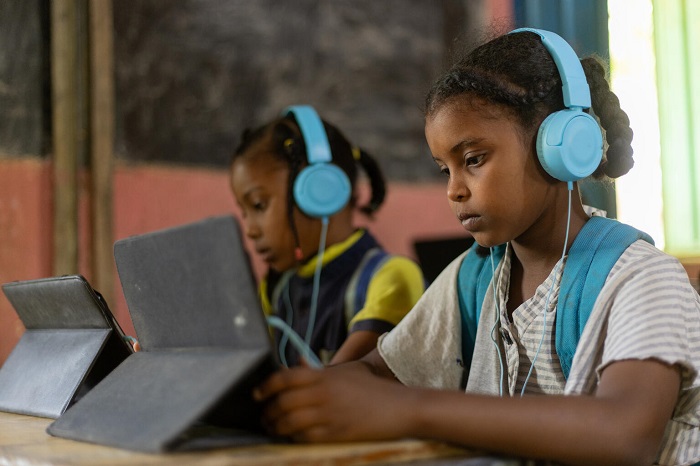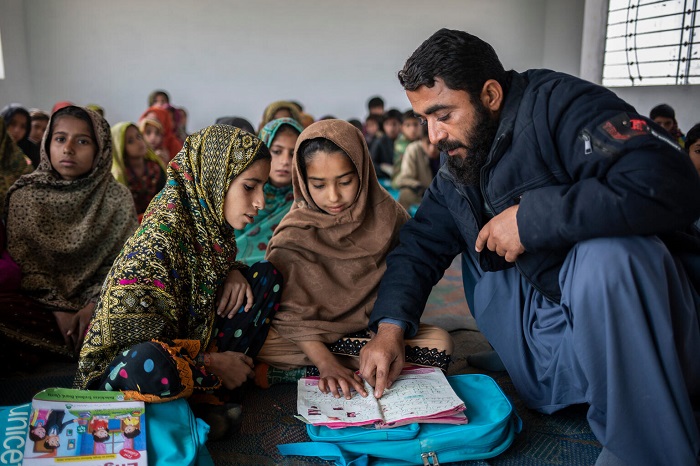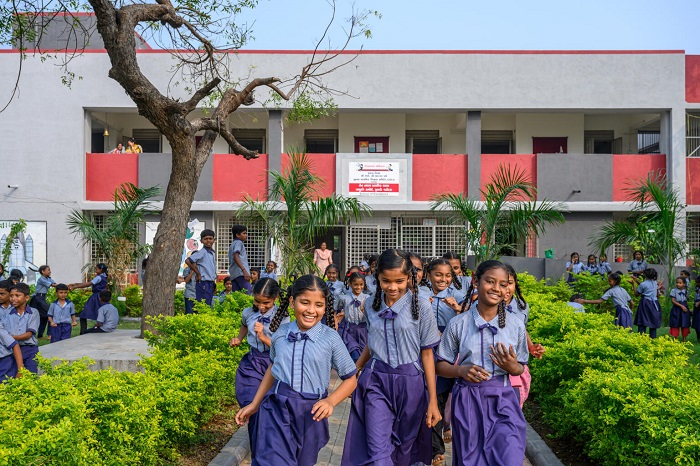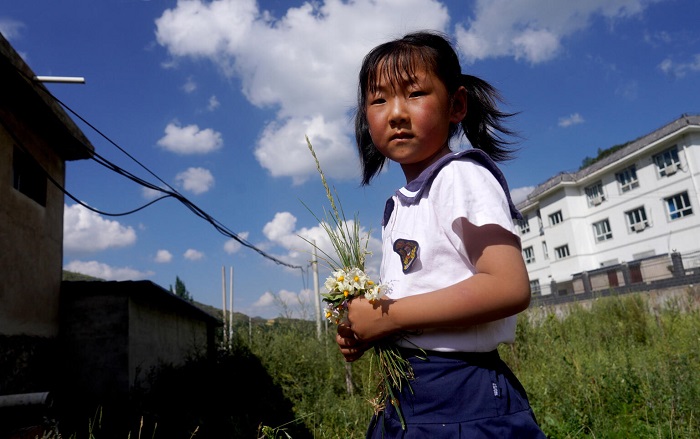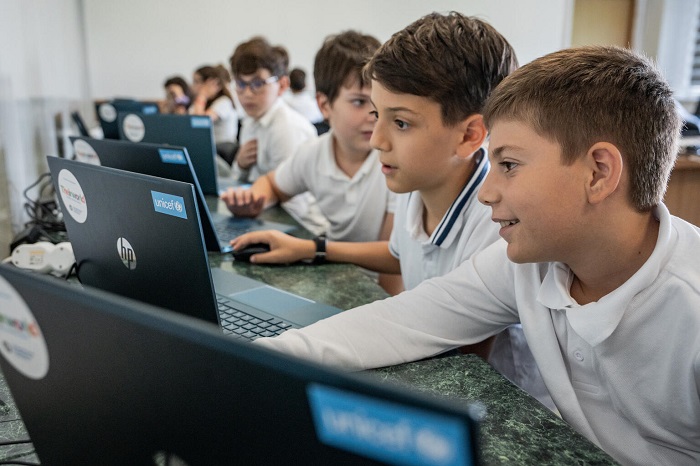Children learn using tablets during an e-learning session at Alshargia safe learning space, Kassala, Sudan
Childhood ‘hangs in the balance’ unless urgent measures adopted to protect children’s futures globally, according to new report
NEW YORK, 20 November 2024 – The future of childhood hangs in the balance if urgent action is not taken to safeguard children’s rights in a changing world, UNICEF warned in its flagship report released on World Children’s Day today.
The State of the World’s Children 2024: The Future of Childhood in a Changing World, projects how three major global forces – or megatrends – will impact children’s lives by 2050 and beyond. The megatrends – demographic change, climate and environmental crises, and breakthrough technologies – provide key indications of the challenges and opportunities children may face in the future.
“Children are experiencing a myriad of crises, from climate shocks to online dangers, and these are set to intensify in the years to come,” said UNICEF Executive Director Catherine Russell. “The projections in this report demonstrate that the decisions world leaders make today – or fail to make – define the world children will inherit. Creating a better future in 2050 requires more than just imagination, it requires action. Decades of progress, particularly for girls, are under threat.”
Pakistan. Deedar Ali has been commuting since the past three years from his village to teach the children in Goth Khuda Baksh Rind.
The climate crisis is already dire, with 2023 being the hottest year on record. According to the report, in the decade of 2050-2059, climate and environmental crises are expected to become even more widespread, with eight times as many children exposed to extreme heatwaves, three times as many exposed to extreme river floods, and nearly twice as many exposed to extreme wildfires, compared to the 2000s.
How these climate hazards impact children will be determined by their age, health, socioeconomic setting, and access to resources. For example, a child with access to climate-resilient shelter, cooling infrastructure, health care, education, and clean water has a greater chance of surviving climatic shocks compared to a child without access. The report underscores the urgent need for targeted environmental action to protect all children and mitigate the risks they face.
India. Tentalav Primary school s a government single shift school having a total of 288 children (137 girls, 151 boys)
Sub-Saharan Africa and South Asia are projected to have the largest child populations in the 2050s. They also indicate an aging population, with the share of children expected to decrease in every region of the world. While still high, the child population drops below 40 per cent in Africa – down from 50 per cent in the 2000s. It falls below 17 per cent in East Asia and Western Europe – where children made up 29 per cent and 20 per cent of the populations, respectively, in the 2000s.
These demographic shifts create challenges, with some countries under pressure to expand services for large child populations, while others balance the needs of a growing elderly population.
Meanwhile, the report acknowledges that frontier technologies – like Artificial Intelligence (AI) – offer both promise and peril for children, who are already interacting with AI embedded in apps, toys, virtual assistants, games, and learning software. But the digital divide remains stark. In 2024, over 95 per cent of people in high-income countries are connected to the internet, compared to nearly 26 per cent in low-income countries.
A child in a wheatfield in Dacaotan, Zhang County, Gansu Province, China.
The report notes that a large percentage of youth in low-and middle-income countries have difficulty accessing digital skills, and this will impact their ability to effectively and responsibly use digital tools in education and future workplaces. These barriers are often linked to socio-economic settings, gender, linguistics, and accessibility.
The report contains some good news. Life expectancy at birth is projected to increase. Gains in children’s access to education over the last 100 years are also projected to continue, with nearly 96 per cent of children globally expected to have at least a primary education in the 2050s, up from 80 per cent in the 2000s. Likewise, with increased investment in education and public health, and more stringent environmental protection, the report states that outcomes for children could improve significantly. For example, the gender gap in educational attainment would narrow, and exposure to environmental hazards would be reduced.
Romania. Ukrainian and Romanian children are using the laptops delivered by UNICEF within the Back to School Campaign organized in September.
The State of the World’s Children 2024 underscores the importance of centering child rights, as outlined in the United Nations Convention on the Rights of the Child, in all strategies, policies and actions. It calls for meeting the challenges and opportunities posed by the three megatrends by:
- Investing in education, services, and sustainable and resilient cities for children.
- Expanding climate resilience in infrastructure, technology, essential services and social support systems.
- Delivering connectivity and safe technology design for all children.
This year, World Children’s Day – UNICEF’s annual day of action for children, is being commemorated under the theme, “Listen to the Future”. As part of the campaign, UNICEF asked children to write letters about the world they would like to see in 2050. Responses have poured in from all over the world – including Gaza City, Haiti, and Tanzania – expressing children’s wishes to be safe, healthy, and educated – and shielded from war and climate hazards. The letters can be viewed here.
“World Children’s Day is a moment for leaders to demonstrate their commitment to the rights and wellbeing of every child,” said Russell. “We can shape a better future for tomorrow’s children, and we have to get started today.” ///nCa, 21 November 2024 (in cooperation with UNICEF Turkmenistan, photo credit – UNICEF)
